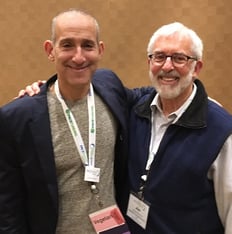From their first meeting of less than 50 people just a couple of years ago to almost 500 this year, PACENation reflects the potential this groundbreaking policy has on the future of the built environment. PACENation is the national, non-profit advocacy organization for Property Assessed Clean Energy (PACE) financing.
In 2016, PACE passed the $3 billion mark in cumulative financing (commercial and residential). “What we’re really seeing is the birth of an industry. It isn’t just about burning less hydrocarbons, it’s also about saving money,” John Hickenlooper, the Governor of Colorado told the crowd.F or three days in February, those who are involved with both residential and commercial PACE, from legislators and lenders to contractors and project administrators, gathered in Denver at the PACENation conference. Expert panelists explored new developments in consumer protection standards, lender collaboration, administrative cost reduction, expanding access to residential PACE programs and more.
or three days in February, those who are involved with both residential and commercial PACE, from legislators and lenders to contractors and project administrators, gathered in Denver at the PACENation conference. Expert panelists explored new developments in consumer protection standards, lender collaboration, administrative cost reduction, expanding access to residential PACE programs and more.
As consultants for energy efficiency and sustainable buildings, we strive to stay on top of new ideas, best practices, standards, and codes. Our clients expect that of us! Here we share the 5 top benefits from attending this year’s event:
- The Untapped Potential: If there was a theme for the Plenary sessions, it was that this is the wave of the future and we are just at the bottom of it. PACE represents the most compelling financing option today for incorporating greater energy efficiency into the design of a new commercial building, or updating and retrofitting an old one. Today, PACE financing is available in over 30 states. Some at the summit predict that within 5 years PACE will be adopted in every state, driving clean energy improvements for the built environment nationwide and even beyond our borders.
- The How To’s: This is where the rubber meets the road. PACE has very real and very specific benefits to the CRE (Commercial Real Estate) market. During breakout sessions we heard from experts on achieving lender consent, new and proven strategies for overcoming obstacles, and getting the “green” light for PACE projects. We also learned more about how PACE can increase property values, align tenant and landlord interests, and the attractive economics for meeting hurdle rates.
In addition, we looked at the difference between a “typical” bank loan and PACE financing. Here’s a hint -- the difference is much more than the interest rate! A PACE project must consider the true cost, including the cost of debt plus the cost of equity, the weighted average cost of corporate capital, calculating realistic paybacks and more.
(Note: In many states, PACE is available for energy efficiency projects on residential properties. At this time, Michigan only allows C-PACE - financing for commercial properties.) - The Networking:We mixed and mingled with thought leaders in sustainability, experts in commercial real estate, legislators and others to gain perspective on how to make PACE work for Michigan. We met people from all over the country and even some international locations where they are considering or already implementing similar programs for both their commercial and residential real estate markets.
- The Money Trail: For PACE to work, you need willing lenders. We took this opportunity to get to know some of the lenders better, and we learned what makes them want to get behind a project. There are definitely things that they look for in a successful project, and also red flags they are sure to avoid. Hearing this information first-hand will help us help move our projects along with fewer surprises.
- The Future: C-PACE presents enormous opportunities for growth and expansion in the solar market. We participated in discussions about the intersection of PACE and Solar PPAs (Power Purchase Agreements), distributed generation, and other models for scaling solar PACE. Going forward, PACE will continue to facilitate growth through business partnerships between solar financiers/developers and PACE providers.
As one presenter noted, PACE is “a win-win-win for property owners, for contractors, and large, small and midsize business owners in local communities and of course local governments themselves.” Attending PACENation was definitely time well spent and ensures that Newman Consulting Group is well versed in the tips and tools to help your organization implement a PACE program for energy efficiency in your commercial or industrial building.
Photo above: PACENation Founder Jeff Tannenbaum (l) with Jim Newman.




